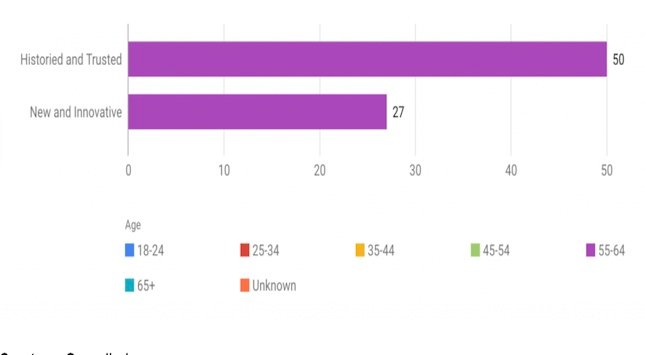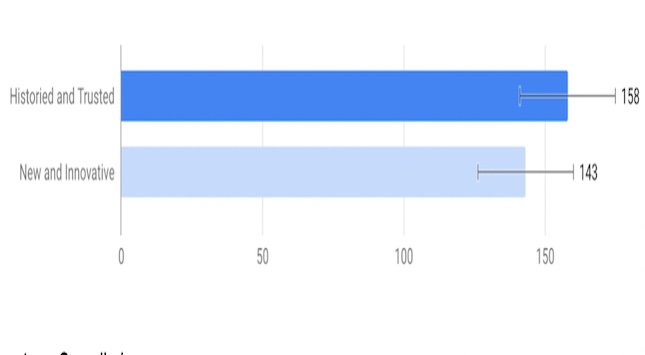For a while now, most entrepreneurs have struggled with the concept of brand and brand positioning. This is primarily because these concepts are complicated and carry big business implications.
As a company owner, you must realize that the outcomes of your company’s identity can either develop your brand’s image or harm it.
Now, understand that branding is the process of building this identity so that your audience can quickly recognize your products or services. While brand positioning is the value people place on your company that differentiates it from competing firms.
The brand and positioning of your business establish the framework for interactions with clients and other businesses.
And, considering how brands aren’t physical structures like skyscrapers but rather mental structures in the minds of your intended audience, there’s a critical necessity for your company’s brand to be strategically positioned.
And to help you do that, we studied various brand positioning techniques to see how customers react to companies that take traditional views vs. those that adopt modern ones.
But, before we get into our research findings, let’s take a look at why brand positioning is so vital for businesses.
What Makes Brand Positioning Critical?
Setting up a great brand and accurately positioning it is critical for business success, and any founder who wants to start a company must concentrate on these because:
- Fundera’s research shows that 89% of people value and remain loyal to companies that reflect their values, and 61% choose to purchase from businesses that provide unique content.
- Demand Metric reveals that companies that are consistent in their offers and messaging are 3.5 times more well-known than those that are inconsistent.
- A study by Consumer Thermometer shows that 64% of women and 68% of men have an emotional connection with brands.
- Gensler’s study reveals that 94% of customers are more inclined to suggest companies they like to their friends.
Tesla’s Effective Brand Positioning

Tesla is a significant electric vehicle manufacturer. On the surface, the company established itself as a leading company by pioneering the shift to renewable energy in the automotive industry and getting customer and investor backing and financing.
When you take a deeper look, what Tesla did was position their firm by developing a consistent:
- Marketing strategy: Despite the absence of a marketing budget, the company’s strong social media presence, excellent use of referral systems, and, of course, Elon’s personal reputation have helped it stand apart.
- Brand mission: Tesla’s brand purpose is to accelerate the development of sustainable green energy.
- Segmentation: Tesla concentrates on high-performance, low-volume vehicles.
- Big ideas: Building enhanced technologies and scalable and efficient energy generation and storage systems are big concepts.
- Position: Tesla positioned itself as a next-gen technology company by claiming to be “the only stylish car that can go from 0 to 100 in 3 seconds without a drop of oil.”
As you establish your firm and look for a fantastic company name, you cannot afford to overlook the importance of effectively positioning your company. While you’re at it, remember that positioning isn’t a one-day job; it will require months or even years of consistent work.
So, in order to help you properly position your brand, we investigated numerous brand positioning approaches to see how customers react to companies that take a conventional vs. modern stance.
Why This Study?
This study intended to find out which company people are keen to accept and how this varies by demography.
And the information we’ve obtained will assist business owners who are structuring or restructuring their small, medium, or mega-corporation in making quick, informed decisions that will guide them in positioning their brand and guide them on how to come up with a business name.
To achieve the survey’s goals, we asked people in America whether they preferred doing business with a well-known and renowned company or a new and modern one.
Here’s Why We Needed to Ask
Establishing a compelling tone is among the most essential decisions you’ll have to make when beginning or rebranding your business.
The perfect tone is critical for every organization since it contributes to creating their brand image and how others perceive them.
Picture how different the world would’ve been if:
- Caleb Bradham had continued with ‘Brad’s drink’ rather than Pepsi.
- Phil Knight had never renamed his company from Blue Ribbon Sports to Nike.
- Tokyo Tsushin Kogyo hadn’t rebranded its name to Sony.
- Larry and Sergey had stayed with Backrub instead of Google.
As we said earlier, the tone of your brand impacts both the overall impression of your organization and audience opinions. Your tone is so vital for company branding, that you can’t afford to disregard it when you’re just starting out.
And the focus of the study was to determine which customer group favored modern businesses over traditional ones.
We chose to focus on this because, for most entrepreneurs, deciding whether to represent their firm with a traditional or modern tone is one of the key considerations a business owner must make.
Here’s What We’ve Discovered About Brand Positioning
Despite knowing that our results were not unusual, the feedback we received was pretty satisfying. Here’s a breakdown of what we got from the 301 participants we surveyed:
- Individuals aged 20 to 30 were more likely to align with new and modern firms than well-established ones.

- Consumers ages 35 through 45 prefer new brands over established companies. However, this age group was relatively open-minded and evenly divided between the two possibilities.

- Consumers between the ages of 45 and 54 are inclined to choose older and more familiar companies.

- Classic and established companies appeal to consumers between the ages of 55 and 65.

- According to the statistics we gathered, men had no personal bias for either new or old brands.

- Unlike men, females choose popular and esteemed brands over fresher businesses.

- Out of 301 respondents, 153 chose popular and reliable companies, while 148 preferred new enterprises. According to the poll, your company may take any approach it wants as long as it is the best fit for its primary market.

What Does All of This Mean?
According to the statistics, millennials are drawn to brands that are new, progressive, ingenious, and daring, while Boomers and Gen Xers prefer traditional brands.
As a result, if you want to target a younger generation, make sure your business has a vibrant, new, and bold brand identity; if you want to connect with an older market, make sure your organization has a sturdy classic identity.
Image Courtesy: Squadhelp

